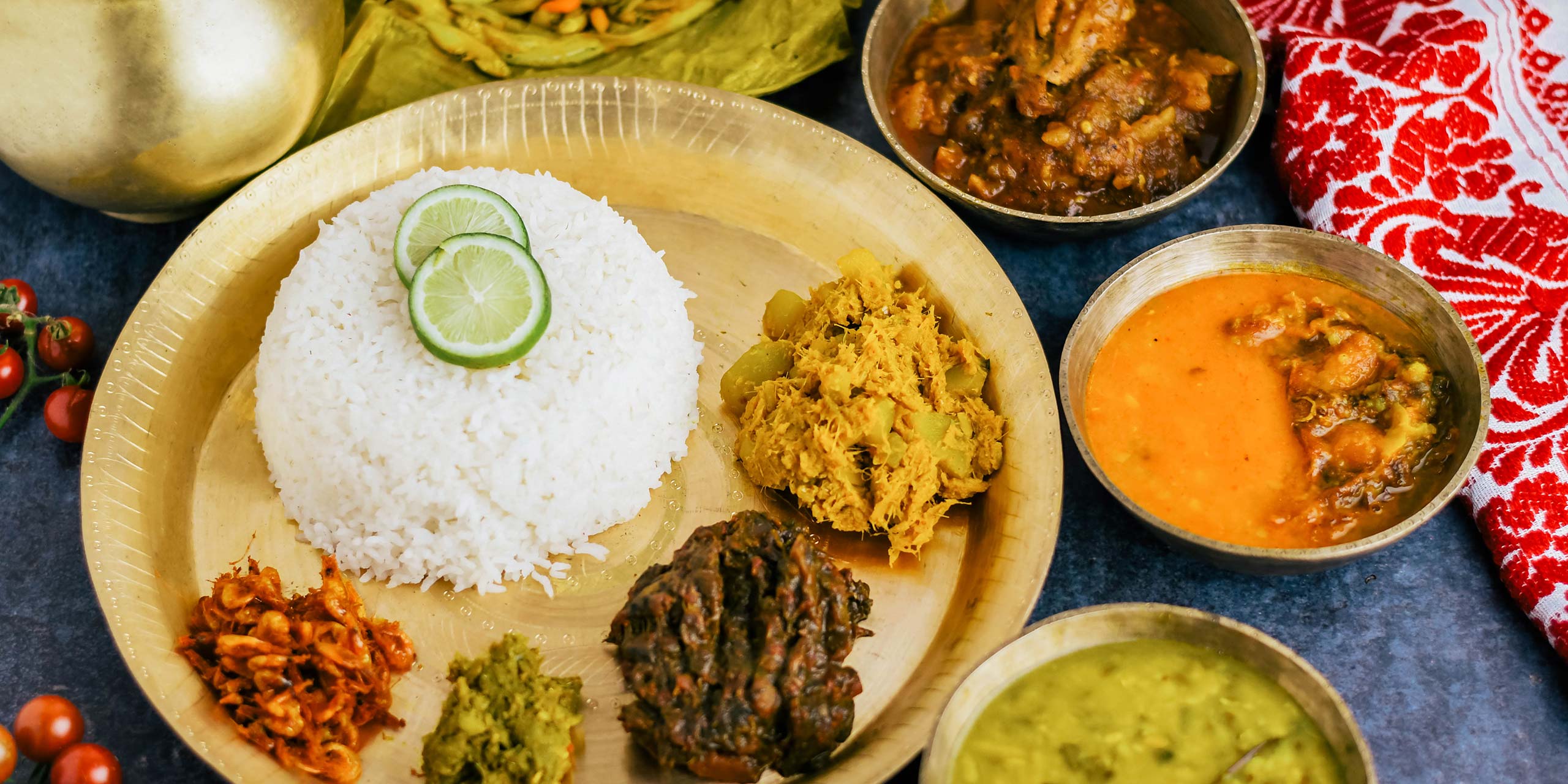
I was traveling on a personal mission to reach the border of India, China, and Bhutan. An imaginary division with which I share a name: The McMahon line. To get there I was going to travel through the remote northeast of India.
I knew Assam was populated mostly by tribal people with different cultures and traditions than the rest of India and the first leg of my trip would take me to Guwahati, the capital of Assam, but I never thought much about the food.
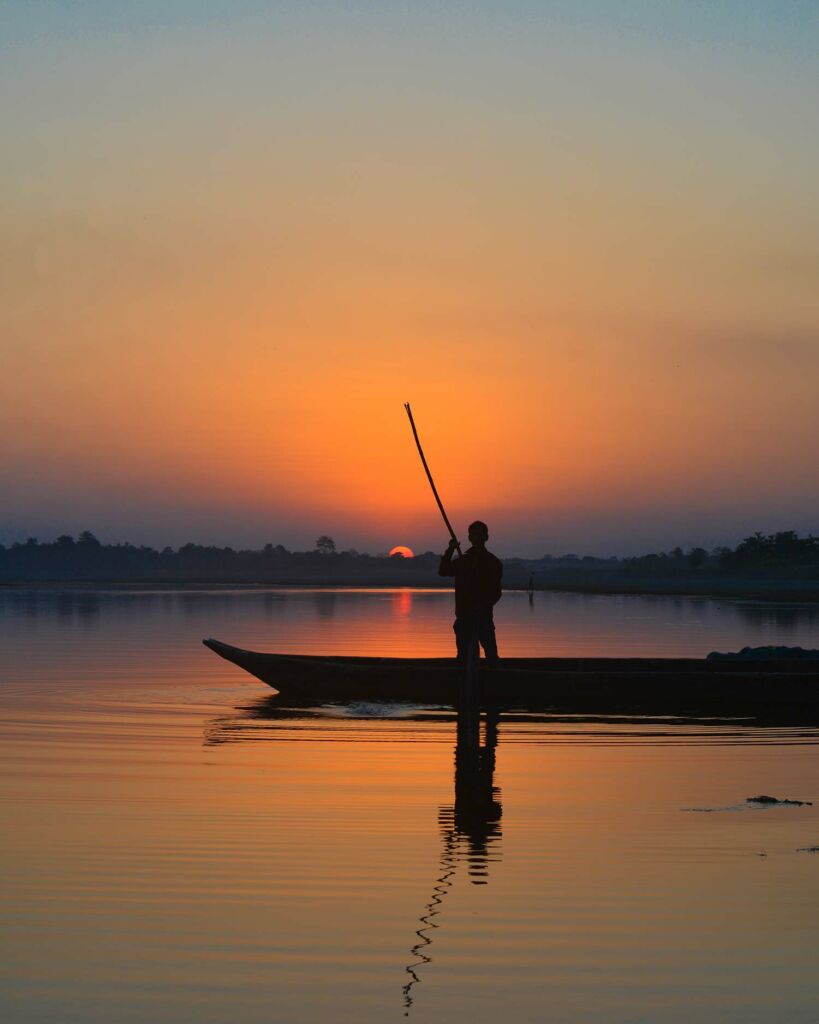
Guwahati seemed like a transformative place when I read about it. Its ancient name is Pragjyotishpur—the city of eastern light. It lies on the bank of the holy Brahmaputra River, one of the greatest on the continent, and acts as gateway to mysterious places that weren’t so long ago home to fierce warriors and cannibals.
I sat next to Dr. Joy on the plane, a surgeon from Guwahati who had an office in Kolkata. He asked me if I had ever had Assamese food? I said I ate Indian food often and loved it. He corrected me, telling me Assamese food has nothing to do with Indian food.
The cultures in the Northeast have evolved from a completely different history from the main bulk of India. He told me I wasn’t likely to find many who speak English in Assam, nor much tourist infrastructure nor much Indian food either. The three things I thought I could always count on in India. English, trains, and butter paneer.
In the 12th century Ahoms of Burma conquered the Assam region and ruled it for six hundred years. The Ahom culturally were closer to the Shan and Tais of southern China than to Hindi speaking Indians. The Ahoms brought their use of fresh herbs instead of dried spices and fermented products like bamboo hearts to the area where it took hold and live on in Assamese food today. These traditions make for less complex and more subtle flavors then found in the rest of India.
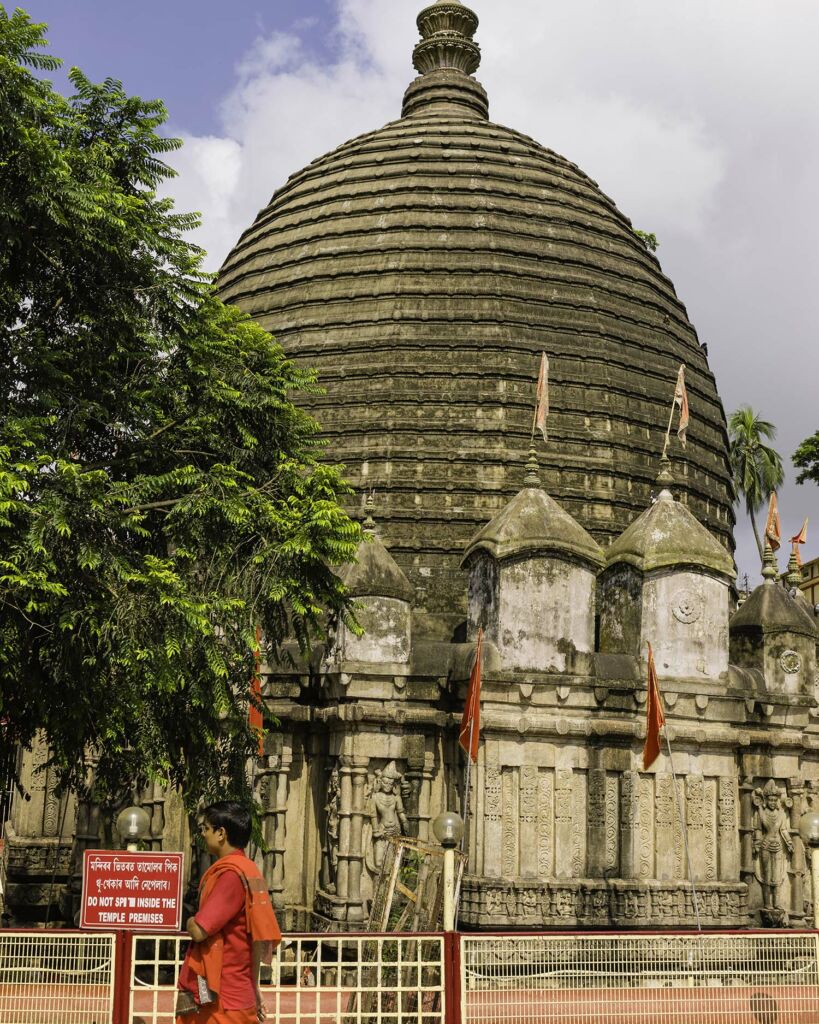
The combination of simple preparation and wok cooking in the region means Assamese dishes are less complex and more subtle than those found in India. A typical meal might include a spicy, dry fish curry, a serving of boiled vegetables to balance out the heat and a dish of meat.
The meat, whether it be pork, beef, duck mutton or what have you will be chopped and cooked fresh, bone in. None of the peoples who make up the Assam region practice any food restrictions. Most importantly every meal will include a dish of khar, dried and slaked banana peel cooked to a paste with any number of other ingredients which adds to the food its signature, slightly alkaline taste.
I took Dr. Joys advice and had my first traditional Assamese meal at Guwahati’s famous Heritage Khorikaa. Chef Atul Lahkar is a local celebrity chef who has hosted luminaries including Gordon Ramsay.
Not only was I able to get a table. But when I arrived Chef Atul himself came out to greet me, not because I am in any way a celebrity, just the first foreigner to come and have a meal post pandemic.
I asked the chef to make me his favorites and I would go with the flow. All the dishes came at the same time. There was a bowl of pitika, a traditional comfort food made of potato or squash blended with fish, fresh green chili, ginger, and mustard seeds. Despite the chilis the dish had a delicate flavor followed by a slow burn and is eaten as a kind of palate cleanser between bites of heavier foods.
Other dishes included dry curried duck with ash gourd seasoned with black sesame puree. From the color and consistency, I expected a curry with a serious punch to it but again the seasoning was mild and only surface. The curry was not at all oily which allowed the tender smoked taste of the duck to dominate.
As no Assamese meal is complete without a fish dish, I was also served Ari fish in banana leaf. The steamed or poached fish was light, flaky and fell away from the bone. The preparation showcased subtle hints of the fresh herbs in which the fish was marinated. All this was served with the normal complement of khar and rice.
After dinner I gave my compliments to the chef. He asked me about my plans. I explained my mission and he told me although Assam foods have their regional differences and that I should find the time to try as many traditional meals as I could.
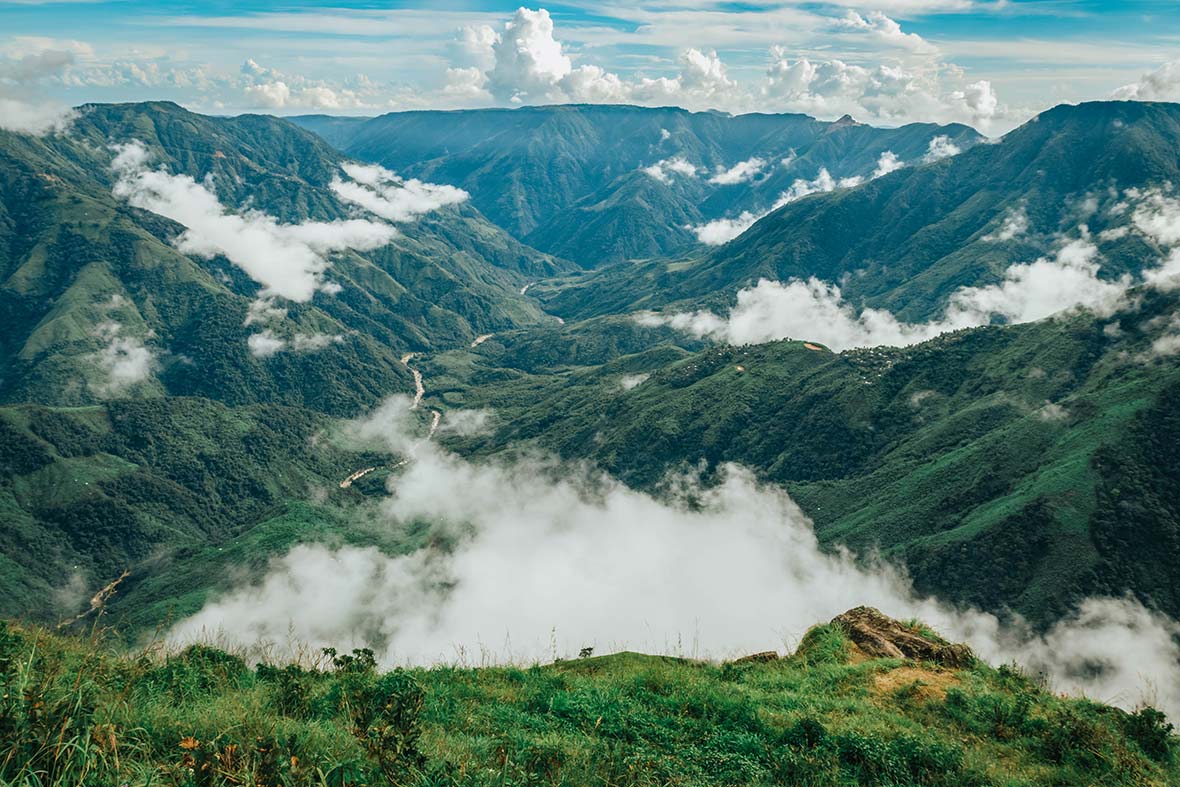
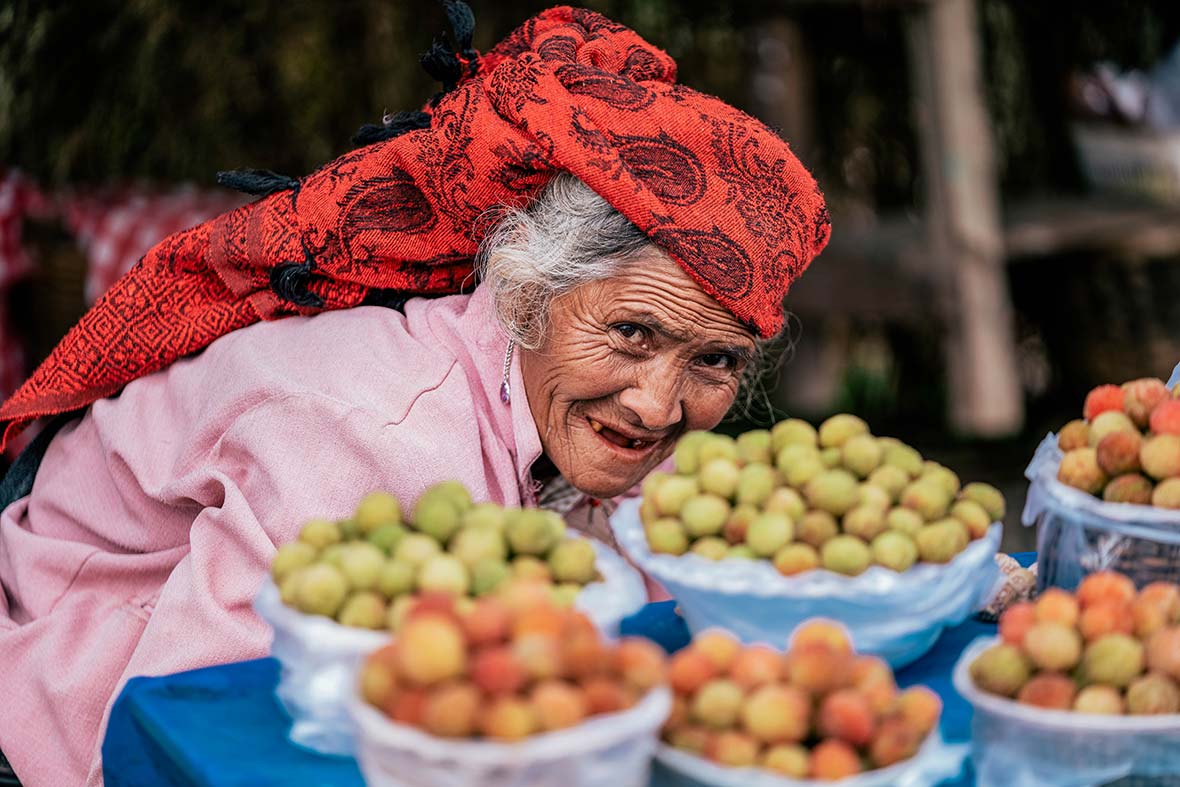
After receiving the permit that allowed me to travel on, I spent twenty days slow traveling through India’s wild northeast in tiny taxis and puttering buses. Sampling the fare wherever I stopped. In Nagaland they favor wild game. I had boar pot cooked fresh herbs and flavored with dried bamboo shoots, a remarkable flavoring agent the Naga have used for ages instead of salt which was reserved for the elite.
In Shillong, the great nature escape for Indians, known as the Scotland of the east for its mild climate, rolling highlands and evergreen trees. I had a bowl of chili fried fatty pork, that was by far the most demonic dish of the trip and something that could have come off a Chinese menu anywhere.
At a diminutive cafe in Hetpur with one long table and stools to squat on I made it known through pantomime that I was after real Assamese food and the smile the owner beamed on me was followed by the special of the day, a tangy fish curry simmered with tomato and potato that was mild and gingery. The curry was served with black rice, and spicy lentil fritters which I saw nowhere else.
I had eaten at a few upper end Assamese restaurants and more than a few rural traditional cafes but in between, in the number of one hotel towns and crossroad connections where I had stayed and stopped, what was available was Assamese fast food. Part Indian, part Chinese adapted locally with a tangible influence from western junk food.
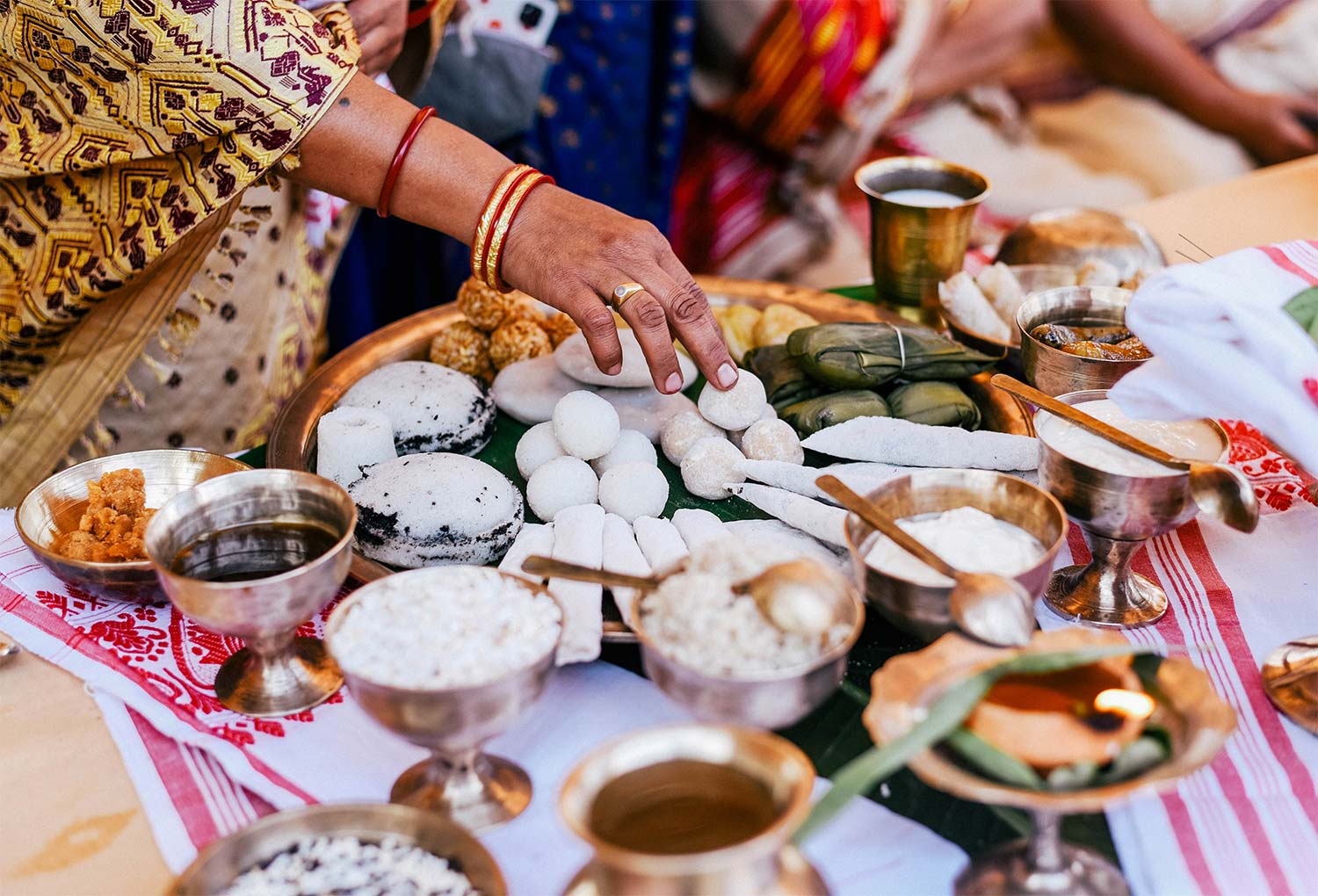
The menus would offer international norms like French fries, chicken nuggets, slider sized burgers all mass produced and tasteless. More interesting are the Rolls, inspired by Indian dosa but more like a western wrap generally filled with egg plus something and covered in sauces. Greasy chow mien is very popular and is prepared in so many ways it’s fun to compare from region to region, the best I had was just outside of the Bhutanese border gates.
Then there are the momos. These are everywhere and range from the dreadful to the downright delicious. Like their cousin dumplings, or perogies, or arepas or tamales or whatever else has wrapped up bits of filling, grilled, boiled and fried in a skin, momos are the worker’s friend and the traveler’s companion.
Gordon Ramsay marveled over the fact that there were no dried spices used and at the simple preparation “It’s food from the ground” he repeated a few times in his episode about Assam in his show Gordon’s Great Escape. He also predicted Assamese might be the next international food trend, blowing up globally like Thai once did.
I’m not convinced of that, I’m not sure it’s unrefined, raw, and sometimes herbal tastes are going to win over the masses. For foodies though looking for a unique cuisine that is a healthy basic way to eat, Assamese could be the next paleo.
